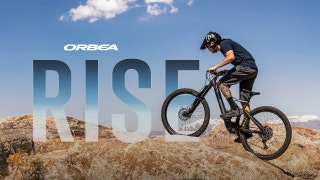Featured Brands
Recommended Products
Black Friday BF20
Get free shipping, on most items, with your $50 purchase today! Same day shipping on most orders if placed by 3pm PST.
PLEASE NOTE:
This offer is only available to physical shipping addresses in the 48 continental United States (no PO Boxes), and some exclusions apply.
Oversize Charges
Some large and/or heavy items are subject to additional oversize charges that are separate from standard shipping costs.
Bike Build Process
All bikes are built, tested, tuned, and ready to ride upon shipment. The bike build process typically takes 2-3 days to complete depending on the bike model and the complexity of the build.
Stock Status
Orders for in-stock items placed by 3PM PST usually ship on the same day. Orders that include special-order or backordered items may be subject to shipping delays depending on product availability. Refer to estimated delivery times in cart when selecting shipping options.

Our Gear Advisors are Ready to Help.
Brake pads are a highly important part of any bike. Without brake pads, stopping would be near impossible. Not all brake pads are created equally though. Some pads provide better stopping power over others, some perform better in wet conditions, and some stay cooler longer to prevent brake fade. The two most common brake pad types are rim brake and disc brake.
Rim brake pads contact the rim in order to slow down and stop and are typically used on road bikes. Some rim brake calipers have replaceable inserts instead of having to replace the entire shoe itself. However, not all brake holders are the same and some require a brand-specific brake shoe, like Shimano brake pads. When it comes to rim material, the type of pad you use is extremely important. Aluminum rims require an aluminum rim specific pad and these pads can generally be from any brand. Carbon rims require carbon fiber specific brake pads. These pads get a little more tricky because often times the rim manufacturer doesn't recommend that riders use another brand's pad that they don't approve of. A good rule of thumb is to use a manufacturer's own carbon brake pad. For instance, if you have Reynolds carbon wheels, you should use Reynolds carbon brake pads.
Disc brakes are a little more tricky than rim brakes. Disc brake systems are mainly used on mountain bikes, cyclocross bikes, and some road bikes. A mountain bike’s brake pads contact a brake rotor in order to stop, instead of contacting the sides of a rim to stop. Most often a manufacturer's disc brake calipers require a specific brake pad and will use multiple brake pads across their entire lineup. For instance, a Shimano Deore pad will be different than a Shimano Zee pad. Disc brake pads come in two different materials: organic or metal sintered. Organic pads, which are also referred to as resin or semi-metallic brake pads, are made from a high-density ceramic and are softer than sintered pads. Resin pads generally provide better stopping power and dissipate heat better. The downside is that resin pads will wear out more quickly. Sintered pads, or metallic pads, use a compound with added metal content. This makes them much noisier than resin pads, but they last longer in wet and mixed weather conditions.
If your bicycle’s disc brake pads have less than 1.5mm of braking surface left, then it is time to replace them. It is pretty simple to change pads but they do need to be properly bedded-in so they brake smoother. To bed in brakes, you'll need to brake hard in a safe environment, like a neighborhood and a parking lot, in order to lay down a thin layer of film onto the rotor surface. If you're ever unsure of which pads your bike needs, our Gear Advisors are here to answer your questions. You can call them at 888-880-3811 seven days a week.
LIMITED TIME BRAND SALES
SAVE 20% OFF ONE FULL PRICED ITEM
SHOP THE GIFT GUIDE
SHOP NOW
SHOP NOW
SHOP NOW
SHOP NOW






